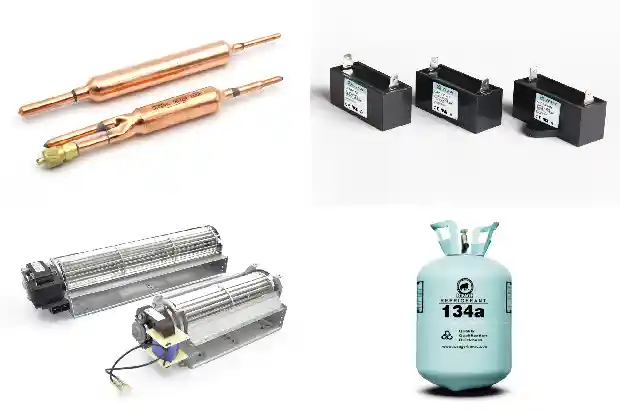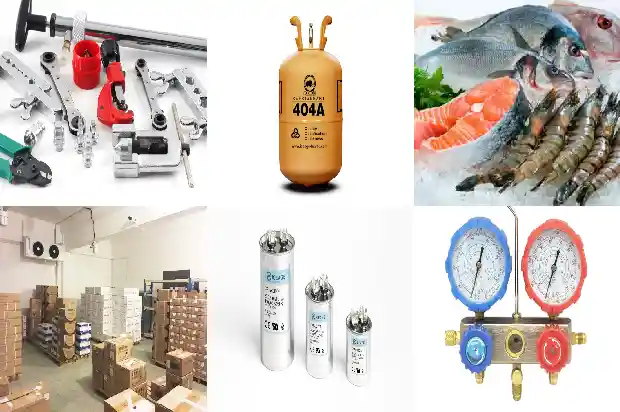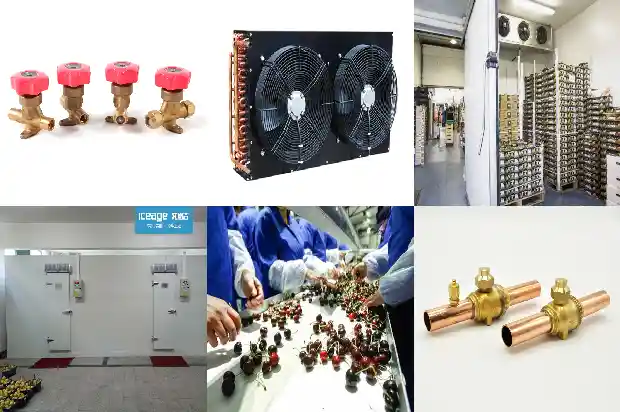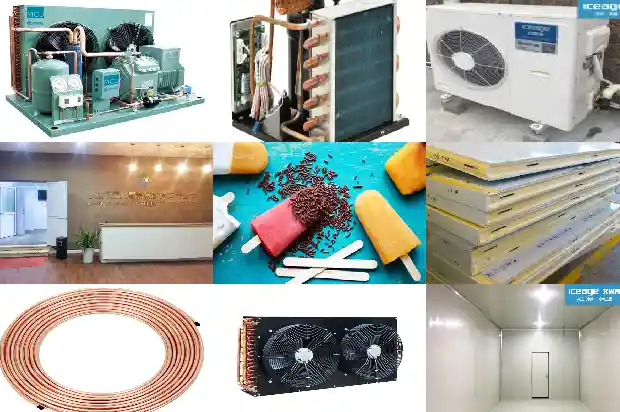Introduction to Basic Types of Cold Storage
2025-01-05
- For compressors with differences in different evaporation system equipment, when making a selection, it should start from the backup and matching of other equipment in the refrigeration system, and comprehensively consider the stable and effective operating conditions of the entire refrigeration system.

- The total refrigeration capacity of the compressor should also take the actual total production volume and economic conditions as the selection criteria. In most cases, the total number of compressors should be at least two.

- When selecting a compressor, it is necessary to consider whether the refrigeration capacity of the entire cold storage can meet the highest requirements during the peak season.
When calculating the data, the operating conditions of the compressor must be reasonably planned by strictly referring to the temperature of the highest - temperature water.
- For the same cold storage, the models and series of compressors should be kept consistent as much as possible, which is convenient for later management and replacement of parts.
Basic types of cold storage:
(1) High - temperature cold storage (fresh - keeping cold storage): The temperature is generally (5℃ - -5℃), suitable for storing (vegetables, fruits, dried foods).
(2) Medium - temperature cold storage (refrigerated cold storage): The temperature is generally (-10℃ - -20℃), suitable for storing (meat products, poultry, fish and shrimp).
(3) Low - temperature cold storage (quick - freezing cold storage): The temperature is generally (-20℃ - -45℃), suitable for storing (dumplings, etc., short - term quick - frozen products).
(4) Ultra - low - temperature cold storage (freezing cold storage): The temperature is generally (-30℃ - -80℃), suitable for storing (tuna, special expensive items such as chemical substances).
(5) Medical cold storage (medicine cold storage): The temperature is generally (2℃ - 8℃), suitable for storing (medicines, vaccines, pharmaceuticals, etc.).
(1) High - temperature cold storage (fresh - keeping cold storage): The temperature is generally (5℃ - -5℃), suitable for storing (vegetables, fruits, dried foods).
(2) Medium - temperature cold storage (refrigerated cold storage): The temperature is generally (-10℃ - -20℃), suitable for storing (meat products, poultry, fish and shrimp).
(3) Low - temperature cold storage (quick - freezing cold storage): The temperature is generally (-20℃ - -45℃), suitable for storing (dumplings, etc., short - term quick - frozen products).
(4) Ultra - low - temperature cold storage (freezing cold storage): The temperature is generally (-30℃ - -80℃), suitable for storing (tuna, special expensive items such as chemical substances).
(5) Medical cold storage (medicine cold storage): The temperature is generally (2℃ - 8℃), suitable for storing (medicines, vaccines, pharmaceuticals, etc.).

注意:原文中温度范围表述有误,按照常规表述习惯已纠正,如 “( 5℃——~5℃)” 改为 “(5℃ - -5℃)” 。如果实际有特殊含义,请根据实际情况调整。
Related Articles
- Introduction to Inspection and Handling Methods for Refrigerant Leak in Cold Storage
- Introduction to Control Valves in Refrigeration Systems
- Introduction to Lithium Bromide Absorption Chillers
- Introduction to the Advantages of Dual - temperature Cold Storage
- Introduction to Various Water Tanks in Air - conditioning Systems
- Introduction to the Cleaning Processes and Methods of Heat Exchangers and Cooling Towers
- Introduction to Six Kinds of Two-stage Compression Refrigeration Systems
- Introduction to Key Points of Compressor Grouping in Quick-freezing Cold Storage
- Introduction to the Construction and Features of Cold Storage in Cold Chain Logistics
- All-round Introduction to Condensers and Evaporators!
- Introduction to Vapor Barrier of Cold Storage and Moisture Protection of Equipment
- Introduction to Oil Collector in Refrigeration System
- Technical Introduction of Process Cooling Water System
- Introduction to Air-cooled Chiller
- Introduction to Five Classification Functions of Cold Storage Installation for Refrigeration
- Introduction to Precooling Methods for Fruits and Vegetables
- Introduction to the Relationship between Refrigerants and Cold Storage Temperatures
- Introduction to Types of Condensers in Cold Storage
